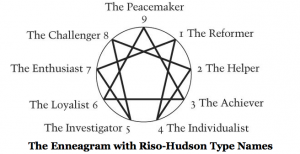Like every novice writer, my initial attempts at creative fiction contained characters that thought and acted like me. My very first main character even looked like me.
As I developed as a writer, I learned to create characters that looked and acted differently, but I struggled when it came to giving them depth and making them real.
In my effort to improve, I interviewed my characters using questionnaires similar to the ones provided by Gotham Writers or this one from Marcel Proust. Later I wrote prequel scenes (not actually used in my novels) as a method of developing their backstories. All of these techniques helped me to develop characters that were more interesting and diverse. Yet I still perceived them as shallow.
While I could assign physical traits, elaborate histories and patterns of behaviors to my characters, when I put them in motion in the story, they didn’t seem real. It took a while before I grasped that I had created manikins and implanted them with superficial, stereotypical brains. In order to develop realistic characters that engaged readers, I needed to get inside my characters’ heads.
I eventually learned to design what goes on inside my characters’ brains first. Once I understood their values and how they viewed the world, the choices of how they appeared and acted flowed naturally. Later, as I wrote my stories, these characters came to life as integral beings that behaved consistently. In addition, because I knew them so well, I could capture the nuances of their thoughts and behaviors.
I struggled a long time before discovering my inside-out character development model. I kept adding more and more layers to my old-school, outside-in technique until one day I experienced an epiphany.
My Character Development Breakthrough
My breakthrough came after I stumbled upon the Enneagram Model, which contains nine personality types and teaches that everyone has a one of these as a core type plus one or two “wing” types that influence but never override the core type. Each core type has three subtypes. What I instantly liked about the model is that it doesn’t assign people to simple pigeon holes. Instead is offers a multidimensional continuum with infinite possibilities.
The Enneagram Model isn’t embraced by academia. It is taught in seminars and workshops as a method of self-understanding and personal development. While I found the model helped me in these areas, the real benefit came when I used Enneagrams to develop my characters. I finally had a tool that helped me get inside their heads where I could understand how they perceived their world, see the assumptions and values that drove the interpretation of their experiences, and know how they would react or respond to the events in my story.
Example
Rather than tell you about how I transformed my character development model using Enneagrams, let me show you.
After developing the basic storyline for one of my novels, I wrote the following description of the primary antagonist.
Name: Cary Engle
Description:
- Cary is a veteran, old-school, corporate espionage agent goes by the moniker Archangel (his preference over his original nickname, Dark Angel).
- He does not understand or use computers. No email, no spreadsheets, nothing.
- He interacts with clients by phone. He is proficient with a smartphone using the camera and text messaging.
- Cary is a skilled con man, so smooth that his targets often share the corporate secrets he needs. If not, he’ll schmooze his way to where he can access the information. When all else fails, there is always bribery.
- Age is catching up with Cary. He’s tiring of the work and worried about the risks.
- He’s also becoming functionally obsolete. Corporate secrets aren’t kept on paper documents any longer. His competitors break in electronically and steal secrets. They get faster results with lower risk and often at reduced price.
- As a result, Cary gets only the difficult cases where others have failed. Which is good because it pays well, but it’s bad because every case is a high-risk challenge — frequently his targets are on high alert after his competitors have tried to penetrate and failed.
- Two years ago, the FBI had one of his inside contacts wired during the document exchange. The Asian woman’s wire became visible during the hand-off. While he sweet-talked the woman, he drew his hunting knife and stabbed her in the abdomen and forced the knife up under her ribcage and into her heart. He escaped, barely.
- Killing an FBI operative gets you noticed. His face is now on their Most Wanted List, but they know him only as Archangel. He has been laying low, living off his savings since then.
- The murder, his first, haunts him. She looked him in the eyes the entire time he stabbed her. He sees her face often, especially as he tries to sleep.
- After not working for a couple of years, cash is getting tight. He’s looking for one more job with a big enough payout to retire.
- He’s never been arrested. But he lives in fear of being caught, because he is sure the authorities will use his fingerprints and DNA to tie him to past cases.
- He’s good with disguises.
- He’s worked with Nick Grimaldi several times in the past, including the last job that ended with the murder. Nick is a middleman, who provides anonymity for the clients and him. Nick offers him a job with the big payout he seeks, but it’s not a corporate espionage opportunity. Nick needs a woman kidnapped, and when the ransom transfer gets messed up, killed. The murder needs to looks like a botched kidnapping and not a hit. Cary is not a hit man, but this is a case where several others have failed to nab her (apparently she is cagey and uses aliases and disguises). Cary can’t pass up the multi-million dollar payout. He takes the job with six weeks to plan and execute the kidnapping.
- He’ll need to recruit a team to execute the scheme. He plans to have one of them be the trigger man.
Appearance:
Height: 6′ 2″
Weight: 190#
Age: 51
Hair: Silver
Eyes: Blue
Other: Attractive man who appears trustworthy
Using this description, I studied the Enneagram model until I found a personality type that matched the character I imagined. Below is a copy of my notes.
Enneagram Profile:
Cary is a Enneagram Type Three. I need to keep the traits of this type in mind as I develop the character. Here are some snippets from Discovering Your Personality Type: The Essential Introduction to the Enneagram, Revised and Expanded. I’ve marked the key traits that describe Cary in blue.
Generally, Threes are effective, competent, adaptable, goal-oriented, ambitious, organized, diplomatic, charming, into performance, and image-conscious.
Type Three exemplifies our desire to be our best self, to develop all of our potentials, and to value ourselves and others. Threes are the “stars” of the personality types—people of tremendous drive, ambition, and belief in themselves. Threes want to excel, to be the best at whatever they do, and they are willing to put in the effort it takes to do so. While Threes are energetic and ambitious, they are also diplomatic—they want to be liked and esteemed by others. They strive to be presentable and appropriate, not wanting to come across in ways that would be disapproved of. They know how to put their best foot forward and present themselves in a way that highlights their energy and confidence.
Threes are, above all, goal-oriented. They get a particular objective in their sights and then actively engage in activities that will bring them closer to whatever they seek. They pursue their dreams tirelessly and cannot understand why others are not similarly motivated.
To achieve their goals, Threes learn to be highly adaptable. They are able to change course when necessary and may even do so several times, including a change of career, if that is what it takes. They may try different approaches to problems until they find a formula that seems the most effective. Similarly, Threes quickly adapt to different social settings, always wanting to be appropriate and to exemplify the values of whatever group they are in. While their adaptability can be an enormous asset, it can also be overdone, leaving Threes unsure of who they are or what their own deepest values are.
Problems arise because Threes learned in childhood that they are valuable only for their accomplishments and self-presentation. They believe that they will be loved only if they become extraordinary in some field of endeavor. Thus, the pressure to be outstanding in whatever they do is intense and draining.
Threes find it difficult to stop or rest when they are caught up in their drive for success. They believe that to do so is to risk failure—and most Threes would rather die than fail and risk being humiliated.
Unless you knew a Three very well, you would never suspect the degree of emotional vulnerability and insecurity that they conceal beneath their smooth, efficient surface. The fact is that despite Threes’ apparent social ease, there is great loneliness and a belief that they must not need help or support. As much as possible, Threes try to avoid their feelings of shame and isolation, but a large part of their growth entails allowing these feelings to arise and become integrated into their functioning self.
Threes often report that they feel confident in their ability to attract other people. They are usually charming and magnetic, and they know how to behave appropriately. Also, many Threes spend significant time and resources cultivating their personal presentation. They work at being in good physical condition and are often well-groomed.
Threes convince themselves that only their image and their performance are valuable. They subconsciously feel that their own natural inner qualities are inadequate or unacceptable, so they strive to become the sort of person that they believe others would look up to. They have an idea of the qualities, talents, and appearance that they need to have in order to be acceptable, and they work tirelessly to embody those qualities.
Threes convince themselves that they must always be outstanding, superb, and exceptional—the best at whatever they are focusing on. To be any less than this is to fail, to be worthless. This is like the child who gets straight A’s but is then tormented by getting an A-minus or a B-plus, or the athlete who wins several gold medals but then feels like a failure for getting a silver or bronze. This kind of self-rejection and self-deception causes Threes a great deal of suffering. Once Threes lose themselves in these self-deceptions, truth becomes whatever works to keep their self-image going, and they are able to deceive others, often without any apparent remorse.
There is more, covering his wing types and subtype, but I think this is sufficient for you to see the value. After defining Cary’s Enneagram types, I added these items to his profile:
- Cary is happily married to his high-school sweetheart, Mia, they’ve been married thirty years. She believes he’s a business consultant who stays out-of-town for months when on assignment.
- Cary and Mia had one daughter, Caroline, who was killed in a car accident four years ago. The event scarred Cary, making him bitter and angry.
- The one positive outcome of Caroline’s death is that her fatherless daughter, Hanna, now lives with Mia and him. Hanna is eight years old when our story starts. She’s precocious and outgoing. She’s taking ballet classes. She has him wrapped around her finger.
- Cary calls home often to talk to Mia and Hanna.
- Cary lives in fear of getting caught, like every criminal, but he most fears that Mia and Hanna would be decimated to learn his is not the upright, honest person they believe he is.
For me, these new attributes brought the character to life. He’s no longer bad for the sake of being bad, he is living to provide for his loved ones and desperate keep his real occupation a secret to maintain their respect and admiration.
I finished by developing a list of personality traits and behaviors for Cary.
Personality and Behaviors:
- Always polite and gentlemanly.
- Well dressed and groomed.
- Speaks articulately.
- Lots of charisma. People are drawn to Cary.
- He’s a con man. He’s adaptable and find it easy to gain people’s trust. He grabs what he’s after and disappears.
- He’s the best corporate espionage agent in the business. Maintaining his image and reputation is important to him.
- Because he doesn’t understand technology, he constantly puts down computers and the people who rely on them.
- Is obsessed with succeeding in his final job.
- Wants to stop his life of crime and retire.
- When he is home, he goes to church — he’s active in the church because he wants people to respect and look up to him.
- Loves his wife and especially his granddaughter. Strongly desires their love and respect.
- The last job, where he murdered for the first time, was his first failure. He’s committed to doing whatever it takes in this final job to be successful.
- In the opening scenes, he chooses not to kill innocent bystanders, a choice that ultimately leads to his downfall.
- As the story progresses and things don’t go according to plan. Cary decides to double down. Failure isn’t an option. He’s broke. He will take any and all risks. He will succeed or die trying.
- When things don’t go right, Cary loses it briefly, taking out his frustrations on inanimate objects when no one is around, before collecting himself and shifting back into his silky-smooth persona.
- Toward the end, when the FBI discovers his real identity and publicly names him, which eliminates the possibility of ever going home, Cary’s becomes unhinged. He’s psychologically destroyed and sees only one option: Finish the job, get the money, disappear and start a new life.
Summary
My inside-out character development model using Enneagrams helps me develop deep, engaging, realistic characters. I believe it can benefit you, too.
As always, I’m also interested in your opinions and hearing about the character development tools that work for you. Please take time to tell me in the comment section below.
If you are interested in learning more about Enneagrams, I would recommend the two books below.
(Full disclosure: We get a commission if you click the links and make a purchase. Thank you!)
Comments
Related Posts

Choosing the Best Novel Writing Software
Novel writing software should speed the process of capturing your words, formatting your work for sharing and incorporating feedback. Here are my recommendations.

How to Overcome Writer’s Block – A Compendium of Solutions
I’ve compiled the best tips on overcoming writer’s block from all around the web. If your stuck, here are some great ideas to help you break through.

Writing Assistance? Even the FBI Will Help!
Being a newbie author, I needed all types of special assistance. To my surprise, I found nearly everyone I asked willing to help, even the FBI.

My Plot Development Tool: Scenes in Swimlanes
I experimented with a number of plot development tools and techniques, but none of them worked well for me. So I created my own using a spreadsheet. I call it Scenes in Swimlanes.






